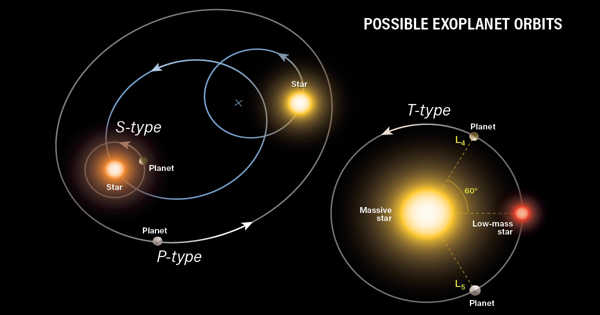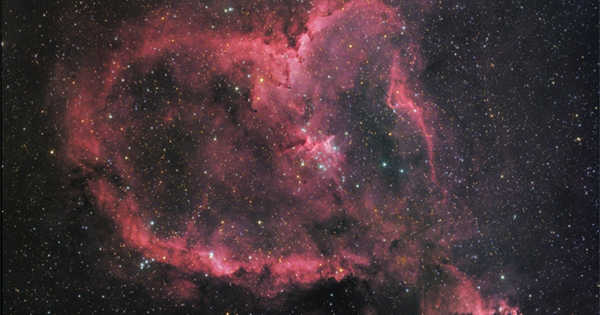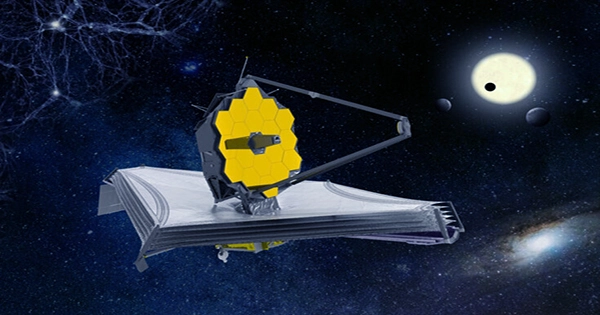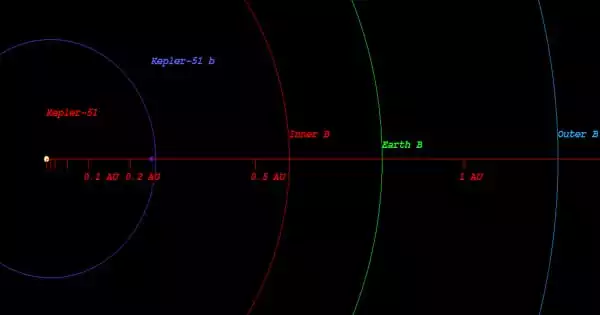The scientists from the University of Cambridge and the Max Planck Institute for Extraterrestrial Physics demonstrated how exoplanets in binary star systems, such as the ‘Tatooine’ planets discovered by NASA’s Kepler Space Telescope, formed without being destroyed in their chaotic birth environment.
They investigated a type of binary system in which the smaller companion star orbits the larger parent star once every 100 years; Alpha Centauri is an example of such a system.
“A system like this would be the equivalent of a second Sun where Uranus is,” said co-author Dr. Roman Rafikov of Cambridge’s Department of Applied Mathematics and Theoretical Physics.
Rafikov and his co-author, Dr. Kedron Silsbee of the Max Planck Institute for Extra-terrestrial Physics, discovered that for planets to form in these systems, planetesimals—planetary building blocks that orbit around a young star—must be at least 10 kilometers in diameter, and the disc of dust, ice, and gas surrounding the star within which the planets form must be relatively circular.
The study, published in Astronomy and Astrophysics, takes the study of planet formation in binaries to a new level of realism and explains how such planets, of which a number have been discovered, could have formed.
Astronomers have developed the most realistic model to date of planet formation in binary star systems.
Planet formation is thought to begin in a protoplanetary disc orbiting a young star, which is composed primarily of hydrogen, helium, and tiny particles of ices and dust. The current leading theory on how planets form, known as core accretion, states that dust particles stick together, eventually forming larger and larger solid bodies. If the process is interrupted too soon, the result could be a rocky Earth-like planet. If the planet grows larger than Earth, its gravity will be strong enough to trap a large amount of gas from the disc, resulting in the formation of a gas giant like Jupiter.
“This theory makes sense for planetary systems formed around a single star,” Rafikov explained. “However, planet formation in binary systems is more complicated because the companion star acts like a giant eggbeater, dynamically exciting the protoplanetary disc.”
“In a system with a single star, the particles in the disc are moving at low velocities, so when they collide, they easily stick together, allowing them to grow,” Silsbee explained. “However, because of the companion star’s gravitational ‘eggbeater’ effect in a binary system, the solid particles collide with each other at much higher velocity. As a result, when they collide, they annihilate each other.”

Many exoplanets have been discovered in binary systems, leaving the question of how they got there unanswered. Some astronomers have even speculated that these planets may have been floating in interstellar space before being sucked in by the gravity of a binary star, for example.
To help solve this mystery, Rafikov and Silsbee ran a series of simulations. They created a detailed mathematical model of planetary growth in a binary that takes into account processes that are frequently overlooked, such as the gravitational effect of the gas disc on the motion of planetesimals within it.
“The disc is known to directly affect planetesimals via gas drag, acting as a kind of wind,” Silsbee explained. “We discovered a few years ago that, in addition to the gas drag, the gravity of the disc itself dramatically alters the dynamics of the planetesimals, allowing planets to form even in the presence of gravitational perturbations from the stellar companion.”
“The model we’ve built combines this work as well as previous work to test the planet formation theories,” Rafikov explained.
Their model discovered that planets can form in binary systems like Alpha Centauri if the planetesimals are at least 10 kilometers across and the protoplanetary disc is nearly circular with no major irregularities. When these conditions are met, the planetesimals in certain parts of the disc move slowly enough relative to one another that they stick together rather than destroying one another.
These findings lend support to the streaming instability, a mechanism of planetesimal formation that is an essential part of the planet formation process. This instability is a collective effect involving many solid particles in the presence of gas, capable of concentrating pebble-to-boulder-sized dust grains into a few large planetesimals that would survive most collisions.
The findings of this study have implications for theories of planet formation around binary and single stars, as well as hydrodynamic simulations of protoplanetary discs in binaries. In the future, the model could be used to explain the origin of the ‘Tatooine’ planets, which are exoplanets that orbit both components of a binary star and have been identified by NASA’s Kepler Space Telescope.
















